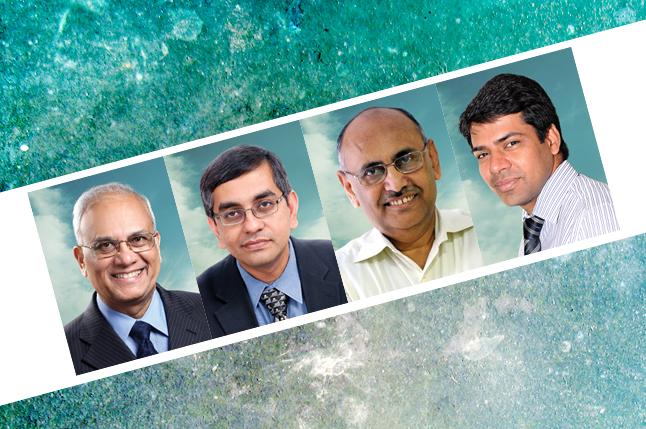
An agile enterprise, as the phrase pre-supposes, connotes an organization structure that’s nimble and quick to react to changes in the external environment. It has its roots in the world of software development, where the software project management community got weary with the inefficiencies and theocracy of the Waterfall Model, which presupposes a fixed, unchanging scope, monolithic development and, finally, one-shot user acceptance testing, where it’s inevitable that there be rejects, negotiations, leading to a badly compromised product being shipped out into the marketplace.
Organizations structure themselves in response to the external environment. If the external environment is predictable and relatively resistant to change (as it was during the License Raj in India), traditional means of work, which emphasize division of labour and efficiencies arising out of economies of scale, should be the way to go. But in an intense, volatile environment as we have today, companies must embrace the agile culture and structure, to compete out there.
How CIOs measure agility?
There are several CIOs who claim that they have an agile enterprise. The question, however, arises as to how are they measuring agility? How many of them are adhering to any specific framework to measure it?
“We are not adhering to any framework. It is important nonetheless. IFFCO is so vibrant that every year one-or-two new companies are coming up. We have to adhere to their requirement and don’t get time to align with any framework,” says S C Mittal, Group CTO, IFFCO.
According to Mittal IFFCO’s focus till now has been more on business expansion rather than adhering to any of the agility frameworks. However, he has not turned a blind eye to it, and keeps a keen eye on several parameters that define agility.
“What we keep mind is whether my employees are happy, am I in a position to address the needs of my top management, am I able to meet the need of the market, are my shareholders happy, am I able to maintain my plants, and am I maintaining my inventory,” he says, adding “This is not to undermine the capabilities of such frameworks. In the time to come, we have plans to go for ISO 27000.”
Reduced time to market, customer complaints
For a lot of CIOs, the yardstick to measure agility includes parameters such as time-to-market and customer complaints.
As Manoj Kumar, CIO at Lakshmi Precision Screws, a leading manufacturer of high tensile precision fasteners and cold forged components says, “Agility can be measured simply if there is a drop in customer complaints. If complaints decrease to 2-3 percent from 5-6 percent, it means that the enterprise is moving to the desired goal of agility and flexibility.”
V C Gopalratnam, VP- IT and CIO, Asia Pacific Japan and China, Cisco echoes the sentiment when he says, “The yardstick to measure agility for me is the time-to-market and time-to-capability. As long as you keep reducing the time to market and the time to capability, you are keeping your organization agile.”
Some enterprise technology decision-makers also believe that adhering to a well-laid out framework may make sense but ultimately one has to customize it according to his enterprise’s business requirements.
It’s good to adhere to frameworks
As Sachin Jain, CIO, Evalueserve says, “While it is good to follow frameworks, it ultimately boils down to your business. One has to define frameworks which meet business requirements. It is good to have a framework as a base.”
“Any framework will work as long as it is aligned with your organization. My recommendation is to adhere to those frameworks that align to your organisation’s culture,” avers Gopalratnam.
Avinash Kadam, Advisor, ISACA India Task Force, meanwhile, thinks differently.
“ISACA has come out with an excellent framework, called COBIT, which is a business framework for governance and IT. The good part about this framework is that if there is any challenge that a CIO is facing (be it with respect to agility, security, or delivery), by using the best practices in this framework, he can know where he is lacking,” he says.
“I fail to understand how can one achieve business agility without having a business framework? You can have a services’ framework, security framework, architectural framework, project management framework but you need a comprehensive business framework too,” he opines.

 In
In
Add new comment